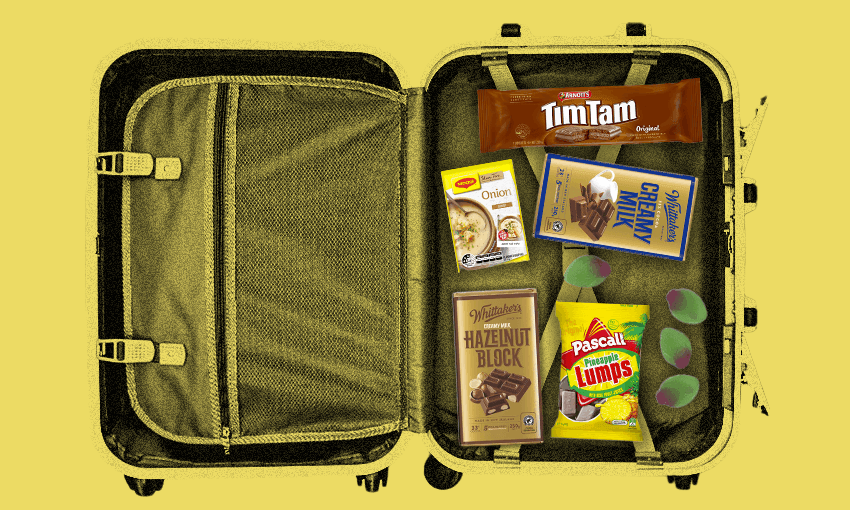It’s one of the most important things to ask before visiting friends and family overseas: ‘What food do you want me to bring?’
This is an excerpt from our weekly food newsletter, The Boil Up.
For most of my adult life I’ve travelled a lot, but I haven’t left Aotearoa since January 2020. However, today I’m off to Sydney and despite being a relatively non-intrepid six-day trip, this one’s a big deal for me. As much as I love Aotearoa – I have to leave sometimes to keep the spark alive.
And a three-year gap since venturing out of Aotearoa has meant the rituals of travel, once second nature to me – how many hours before the flight to get to the airport, the volume of liquids allowed in my carry-on, whether or not there’s a McDonald’s beyond airport security (there is) – have been lost to the void.
Of course, something that hasn’t changed is that my entire trip is coloured by a long list of 31 places to eat. Whether it be Maltese pastries, a Portuguese restaurant within a tennis club, pierogi lunches or Lebanese pizza, I am making the most of Sydney as a delicious connector to other parts of the world that I long to return to. (On that note, I enjoyed this piece by Alicia Kennedy about the complicated politics of foodie destinations.)
All this contemplation about food and tourism has led me to another thought on destination food: the peculiarities of the food we pack in our suitcase to take to loved ones overseas, and the food we bring home with us on our return to share, or to eat alone. Whether you’re leaving Aotearoa or travelling home, it’s common courtesy to ask “what food do you want”.
On previous trips, I’ve stuffed bags of feijoa lollies from the dairy, bottles of Penfolds shiraz, loaves of kūmara sourdough and Whittaker’s blocks into my bag for homesick friends. Too bad most of the things I really want to bring home on my return would threaten Aotearoa’s fragile biosecurity.
This time, the friend I stayed with in Sydney requested “fresh seafood”, 1 x Garage Project Hāpi Daze and supermarket coffee beans. I’ve fulfilled her last wish along with a loaf of sourdough baked by her old flatmate who also happens to be my boyfriend. As for me, I’ve already pre-ordered treats that I can’t buy in Aotearoa to be delivered to my friend’s flat: bottles of Ting, a Jamaican grapefruit soda that I drank religiously when I was last in London and Spanish tinned clams – if anyone has a definitive answer as to whether customs will allow these into the country please do get in touch as I’d rather not be forced to gulp them down in the declaration line.
The food that we long for in its absence reveals much about us and our culture. Sometimes understanding suitcase kai means acknowledging some negative aspects of New Zealand – television programmes like Border Security reveal that the food longings of some groups (namely, non-white immigrants) are treated with far more suspicion than others’.
Part of the bittersweet charm of suitcase kai is that it’s severely limited, the next delivery requires another flight. In this context, food becomes a precious edible treasure rather than something replaceable by a quick dash to the supermarket. Savoured thoughtfully, purposefully and perhaps with a tinge of sorrow. In pandemic times, as travel has been even more restricted, the emotions associated with the food in our suitcases have only been heightened.
It’s a dynamic suitcase economy of cravings. Balms to homesickness or sample flavours of places we dream to visit, transported by way of roller bags and carry on luggage.





